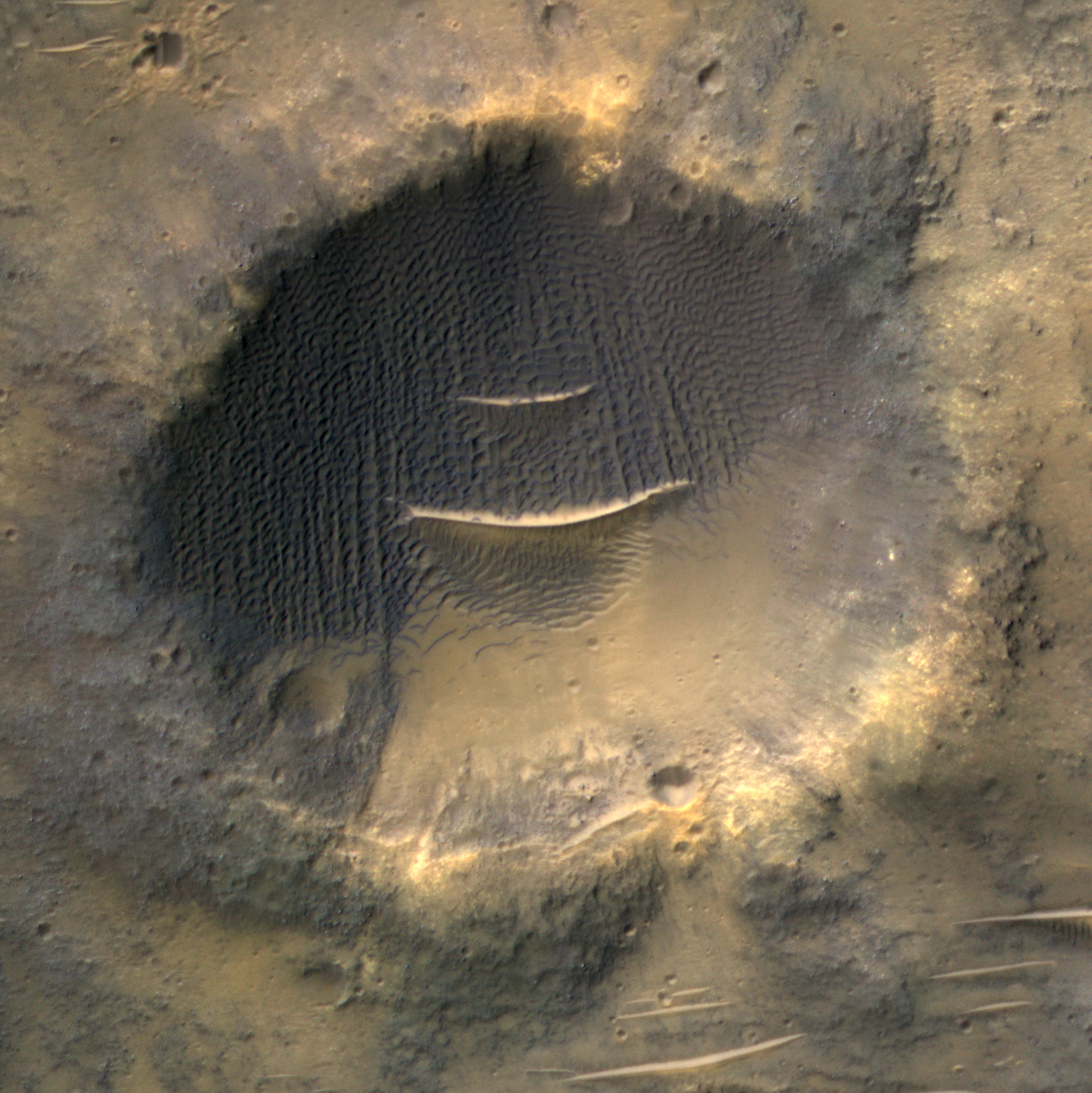In the lee

Swirly rocks
June 18, 2014
Where is Curiosity on her 1 Mars year anniversary?
July 1, 2014 A piece of Mars: This crater (290 m or 950 ft across) is crawling with all sorts of ripples and dunes. The wind mainly blows from the top to the bottom of the frame, and it is responsible for the wonderful textures in the dark gray sand. It has also formed larger, cream-colored ripples. The creamy and dark gray sand have taken turns burying one another, like vines competing for sunlight. (HiRISE ESP_034084_1655 , NASA/JPL/Univ. of Arizona)
A piece of Mars: This crater (290 m or 950 ft across) is crawling with all sorts of ripples and dunes. The wind mainly blows from the top to the bottom of the frame, and it is responsible for the wonderful textures in the dark gray sand. It has also formed larger, cream-colored ripples. The creamy and dark gray sand have taken turns burying one another, like vines competing for sunlight. (HiRISE ESP_034084_1655 , NASA/JPL/Univ. of Arizona)




4 Comments
Has the sand color be correlated to composition and material density? Location of material across the dune wave can indicate particle size also.
The dark gray sand is similar to other sands on Mars that are basaltic (some mixture of pyroxene, plagioclase, and possibly olivine), similar to the lava from terrestrial pacific islands (there are black sand beaches in Hawaii that are very similar in composition). And yes, grains of different sizes and densities are transported differently – those most easily moved by the wind are preferentially transported up a dune. I don’t think we know what the lighter-toned bedforms are made of. They’re less mobile than the dark sand, so it’s probably some combination of dark sand, possibly larger grains, and atmospheric dust that has been trapped in the lows between grains (and the dust is probably what makes it look lighter).
Are the swale like features following contour lines? Are they long – lived? Do they slowly move down slope?
You mean the larger ripples? They don’t quite follow contour lines. They’re nearly at the bottom of this crater. Actually they’re aligned perpendicular to the main wind, which is typical of dunes and ripples that form in an environment with one major wind direction. If they’re moving at all (which they may not be anymore), they’ll migrate toward the bottom of the frame.
The dark textured ripples that look like hair are moving, also toward the bottom of the frame.